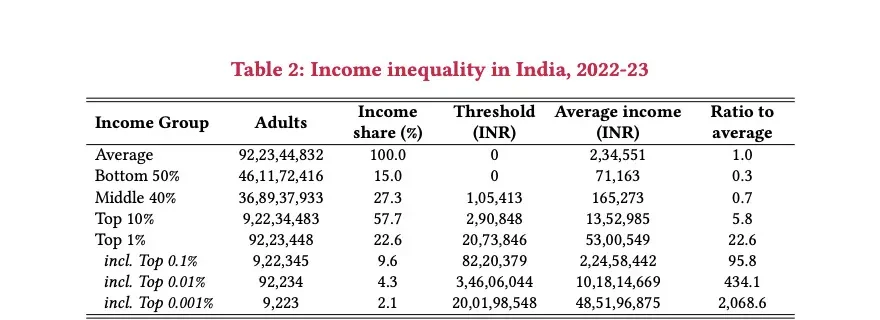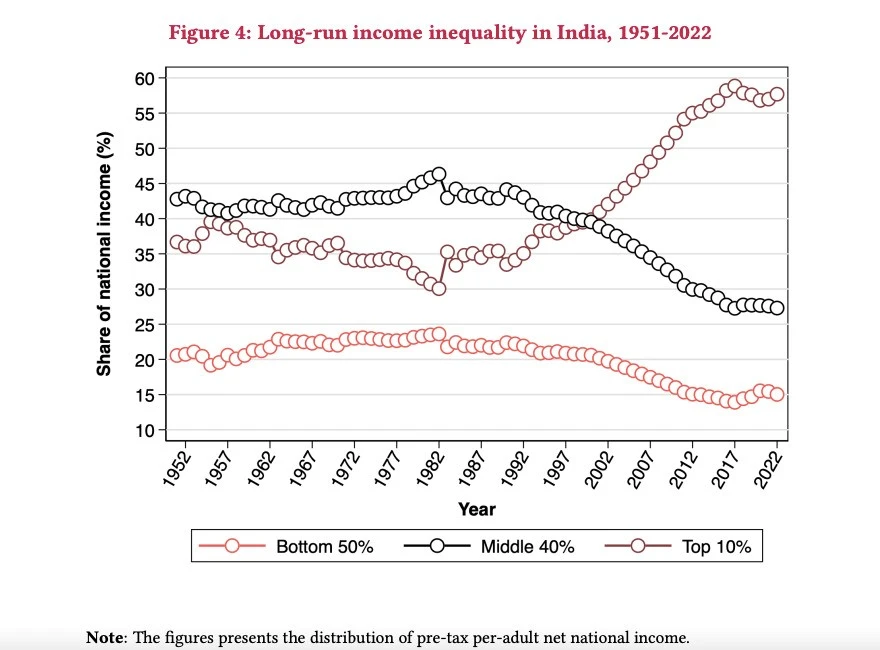The World Inequality Lab (WIL) recently published a report titled “Income and Wealth Inequality in India, 1922-2023,” highlighting the inequality trends in India.
Key findings of the study:
- By 2023, the wealthiest 1% of Indians held over 40.1% of the country’s wealth, marking the highest concentration of wealth among the top 1% in six decades, surpassing South Africa, Brazil, and the US.
- The bottom 50% of the population received only 15% of India’s national income, indicating a significant disparity.
- Trend analysis showed that inequality decreased post-Independence until the 1980s but began to rise sharply after the early 2000s, with the Indian income tax system potentially exacerbating this inequality.
- The report discussed how extreme wealth concentration can disproportionately influence society and governance, possibly leading to plutocracy, especially when combined with weak democratic institutions.
Ref:Source
| UPSC IAS Preparation Resources | |
| Current Affairs Analysis | Topperspedia |
| GS Shots | Simply Explained |
| Daily Flash Cards | Daily Quiz |






